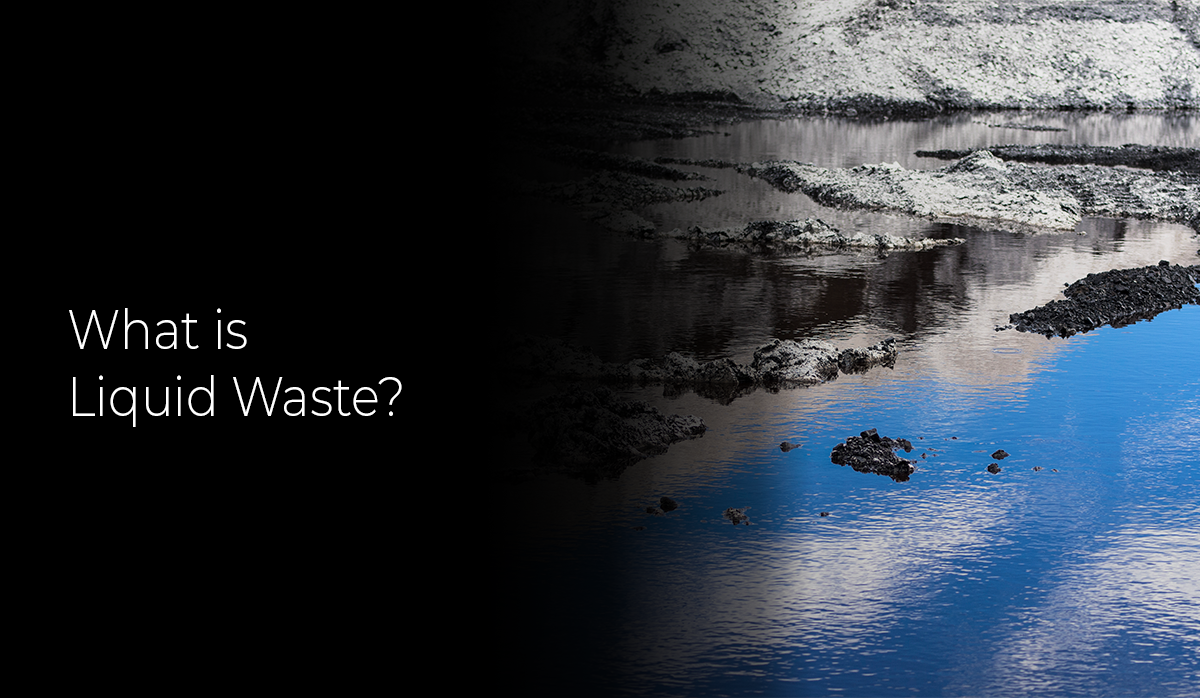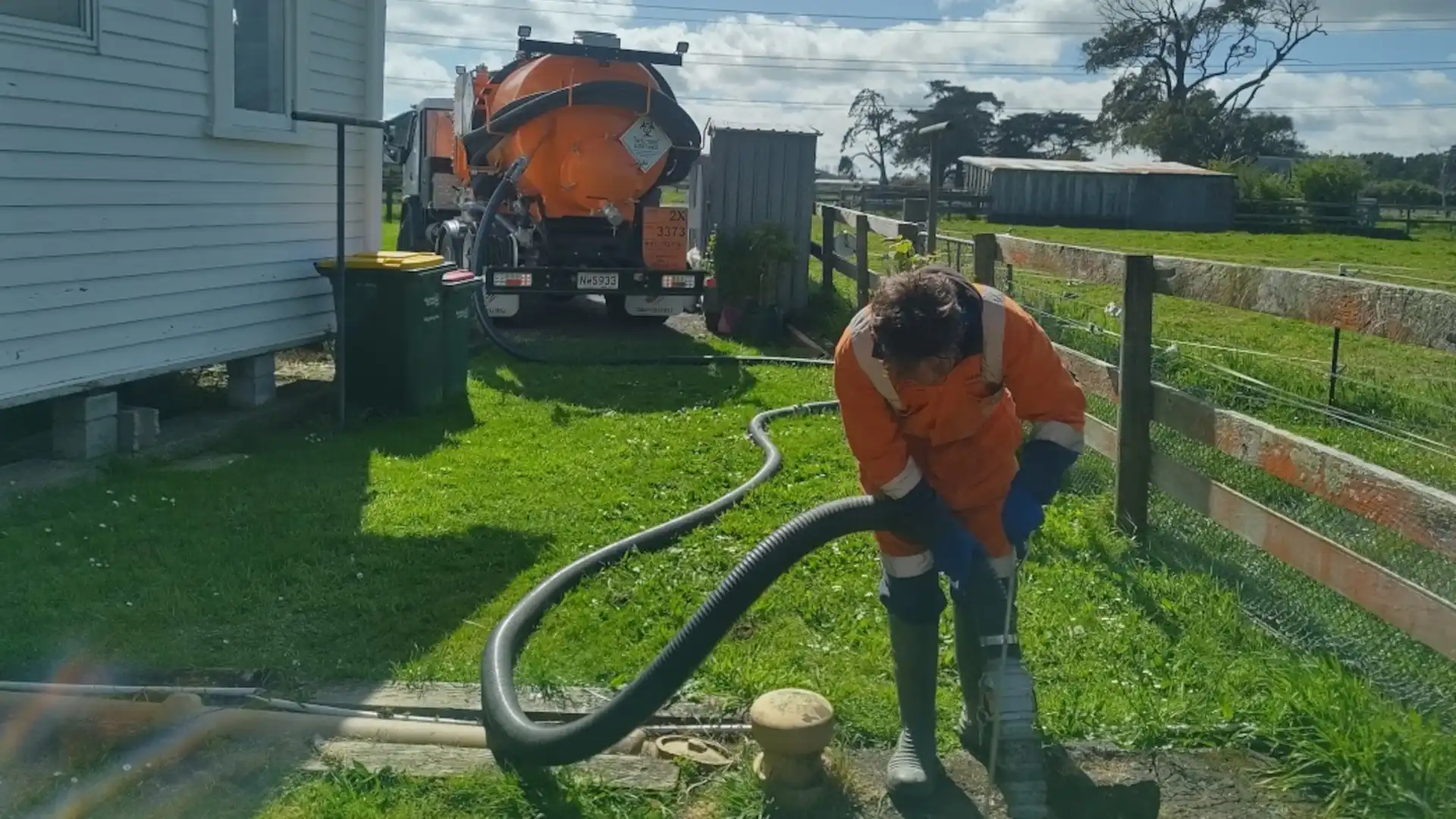Industrial Wastewater Treatment: Customized Solutions for Complex Wastewater Challenges
Industrial Wastewater Treatment: Customized Solutions for Complex Wastewater Challenges
Blog Article
How Liquid Garbage Disposal Works: A Comprehensive Summary of Strategies and Technologies Utilized

Summary of Liquid Waste Kind
The intricacy of liquid waste types demands a detailed understanding of their characteristics and ramifications for disposal. Fluid waste can generally be classified into numerous kinds, including industrial, local, agricultural, and dangerous waste. Each group exhibits distinct residential or commercial properties, needing details management techniques to reduce ecological and health risks.
Industrial fluid waste stems from manufacturing processes and commonly contains a series of impurities, such as hefty metals, solvents, and organic compounds. Local liquid waste, mainly consisting of wastewater from families and business establishments, has raw material, nutrients, and virus (industrial wastewater treatment). Agricultural fluid waste, consisting of drainage from ranches, might consist of fertilizers, chemicals, and animal waste, posing threats to water quality and ecological communities
Harmful liquid waste is defined by its poisoning, sensitivity, or potential to trigger harm. This category consists of materials like acids, bases, and specific chemicals that demand stringent handling and disposal protocols. Comprehending these diverse fluid waste kinds is essential for establishing efficient disposal methods and making certain conformity with ecological policies. Proper category and characterization are vital for implementing appropriate treatment strategies and reducing the adverse effect on public health and wellness and the environment.
Physical Treatment Techniques

Testing is the preliminary action, where larger particles and debris are removed from the fluid waste using screens or grates. This process safeguards downstream devices from damage and makes certain smoother procedure. Complying with testing, sedimentation utilizes gravitational force to separate solids from liquids. In sedimentation storage tanks, heavier particles clear up at the bottom, forming a sludge layer, while the made clear liquid can be more dealt with.
Filtering is another important method that involves passing the fluid through porous products, such as sand or membranes, to catch smaller sized bits. This step enhances the high quality of the liquid, making it ideal for subsequent treatment processes.

Chemical Treatment Methods
Chemical therapy strategies are crucial for effectively taking care of liquid waste, particularly in resolving liquified and colloidal pollutants that physical techniques may not effectively eliminate. These techniques use different chemical representatives to counteract, speed up, or transform unsafe compounds into much less hazardous types.
One typical approach is coagulation and flocculation, where chemicals such as alum or ferric chloride are included in advertise the gathering of put on hold bits. This process boosts sedimentation, permitting simpler removal of the resulting sludge. In addition, oxidation processes, using representatives like chlorine or ozone, are employed to damage down complex natural compounds and virus, making the waste more secure for discharge or further therapy.
Neutralization is another essential strategy, which readjusts the pH of acidic or alkaline waste streams to neutral degrees, go right here stopping potential damage to downstream systems and the environment. Additionally, advanced oxidation processes (AOPs) utilize mixes of oxidants and ultraviolet light to degrade relentless pollutants, achieving a higher degree of treatment performance.
Organic Therapy Procedures
Organic treatment processes play a vital role in the administration of liquid waste by utilizing microbes to decompose natural matter and decrease contaminant degrees. These processes can be generally categorized into anaerobic and aerobic treatments, each employing particular microbial areas to achieve efficient waste degradation.
Cardio treatment includes the usage of oxygen to facilitate the failure of organic products by germs. This procedure is frequently implemented in activated sludge systems, where aeration containers supply a favorable environment for microbial growth, resulting in the oxidation of natural contaminants. The resultant biomass can be separated from treated effluent through sedimentation.
In contrast, anaerobic therapy occurs in the lack of oxygen, relying upon different bacteria to damage down organic issue. This method is specifically beneficial for high-strength waste, as it creates biogas, an eco-friendly energy resource, while lowering sludge manufacturing. Technologies such as anaerobic digesters are frequently utilized in commercial and local applications.
Both cardio and anaerobic biological therapies not just lessen the environmental impact of fluid waste yet also assist in resource recuperation, making them vital elements of lasting waste management methods. Their performance, adaptability, and efficiency sustain their widespread application throughout various markets.
Arising Technologies in Disposal
Cutting-edge approaches to fluid waste disposal are rapidly evolving, driven by advancements in innovation and a boosting emphasis on sustainability. Among these emerging modern technologies, membrane layer bioreactors (MBRs) have actually gained traction for their capacity to integrate biological therapy with membrane layer purification, leading to high-quality effluent that can be reused in numerous applications. MBRs allow smaller impacts and extra reliable operations contrasted to conventional systems.
An additional encouraging development is making use of anaerobic digestion integrated with nutrient recovery technologies, which not just treats liquid waste yet additionally generates biogas and recuperates useful nutrients like nitrogen and phosphorus. This twin advantage boosts resource performance and reduces ecological effect.
Furthermore, advanced oxidation procedures (AOPs) are being embraced for the destruction of intricate organic pollutants. These approaches make use of powerful oxidants and stimulants to damage down contaminants at the molecular level, supplying an extremely reliable service for difficult waste streams.
Additionally, the combination of expert system and equipment understanding in waste monitoring systems is enhancing operational effectiveness and predictive upkeep, resulting in lowered costs and enhanced environmental conformity. These modern technologies reflect a significant change towards more lasting and effective learn the facts here now liquid waste disposal practices.
Verdict
Finally, efficient fluid garbage disposal necessitates an extensive understanding of different techniques and modern technologies. The assimilation of physical, chemical, and organic therapy methods ensures the effective administration of diverse waste types. Moreover, the introduction of innovative from this source technologies improves therapy efficacy and advertises sustainability in waste management practices. By continuously progressing these techniques, it becomes possible to attend to the expanding obstacles connected with fluid waste, inevitably adding to environmental management and source healing.
Fluid waste disposal is a crucial facet of environmental management, needing a thorough understanding of numerous techniques and modern technologies tailored to different waste kinds. Liquid waste can broadly be classified into numerous types, consisting of commercial, local, farming, and hazardous waste. Agricultural liquid waste, including overflow from ranches, may contain plant foods, chemicals, and animal waste, positioning threats to water quality and ecosystems.
Various physical therapy techniques play a critical function in managing liquid waste properly - industrial wastewater treatment.In verdict, reliable fluid waste disposal necessitates a detailed understanding of various methods and modern technologies
Report this page